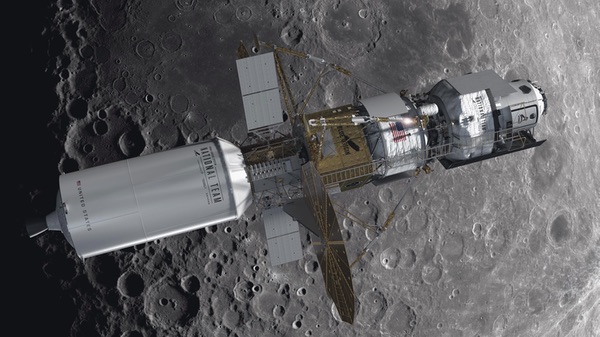Beyond Apollo: guiding the next Moon landingby Alan Campbell
|
| Apollo may have served as a powerful demonstration of flight avionics, but its paltry software could fit on a floppy disk. A smartphone has thousands of times more code. |
One major reason is that the technology spawned in the Apollo-era has advanced considerably since the 1960s. Think of the cameras, optics, sensors, computers, rockets, materials, and other leaps in technology that make life on Earth so much better.
The result for the spacecraft is broader capability but also greater complexity. Apollo may have served as a powerful demonstration of flight avionics, but its paltry software could fit on a floppy disk. A smartphone has thousands of times more code. Artemis landers now in development will process terabytes of data, just like today’s safer automobiles do.
All of this technology will mean that astronauts can and should offload many tasks to the spacecraft’s various systems. They will fly the vehicle more like modern aircraft than like the Apollo LM. It’s not quite a self-driving car, but the same technologies for autonomous systems on Earth will increase safety and capability at the Moon.
Importantly, one groundbreaking technology from the Apollo era will take one more step. Serving as central command will be the guidance, navigation, and control (GN&C) system, a set of flight computers and software that has proved its value since the space program began in the 1960s. Apollo, Space Shuttle, International Space Station, Orion—this long pedigree has relied on Draper GN&C.
| New for Artemis will be a great range of capabilities not available to Apollo, among them being terrain relative navigation and hazard detection and avoidance. These modern techniques will process lunar scenery in real time to navigate to a safe landing. |
The Apollo guidance computer was a briefcase-sized machine that juggled an array of vital tasks, from navigating the ship to running its oxygen generator, heaters, and carbon dioxide scrubbers. The Apollo missions were the first where a computer was entrusted with handling flight control and life support systems—and therefore the astronaut lives on board.
New for Artemis will be a great range of capabilities not available to Apollo, among them being terrain relative navigation and hazard detection and avoidance. These modern techniques will process lunar scenery in real time to navigate to a safe landing. Another new capability is blended autonomous and manual control modes that allow for simple and precise inputs from the astronauts to fly the spacecraft and allow the astronauts to supervise the descent instead of wrangling the control sticks. The vehicle can guide itself to a safe landing—essential for uncrewed cargo delivery missions to build up a base—but on the crewed missions, astronauts can re-engage at any time.
The team to make this happen is in place. Draper brings its human space exploration heritage as a member of the National Team. Led by Blue Origin, the National Team puts “all hands on deck” to meet the bold challenge of getting Americans back on the Moon and opening the Moon for business. Along with Draper and Blue Origin, the team includes two demonstrated leaders in human space flight systems: Lockheed Martin and Northrop Grumman. This team has collaborated for over a year already, developing its approach together with NASA. Draper’s work extends existing roles on Lockheed Martin’s Orion, Northrop Grumman’s Cygnus, and Blue Origin’s engine, New Glenn, and Blue Moon programs.
Pioneering Apollo astronauts like Neil Armstrong proved how it could be done. What he and others did with their eyes and brains and hands to land on the Moon is what we’re now building into the systems of today’s program. Artemis’ “first woman and next man on the Moon” will continue the story of space exploration, flying modern machines to achieve great things.
Note: we are temporarily moderating all comments submitted to deal with a surge in spam.
